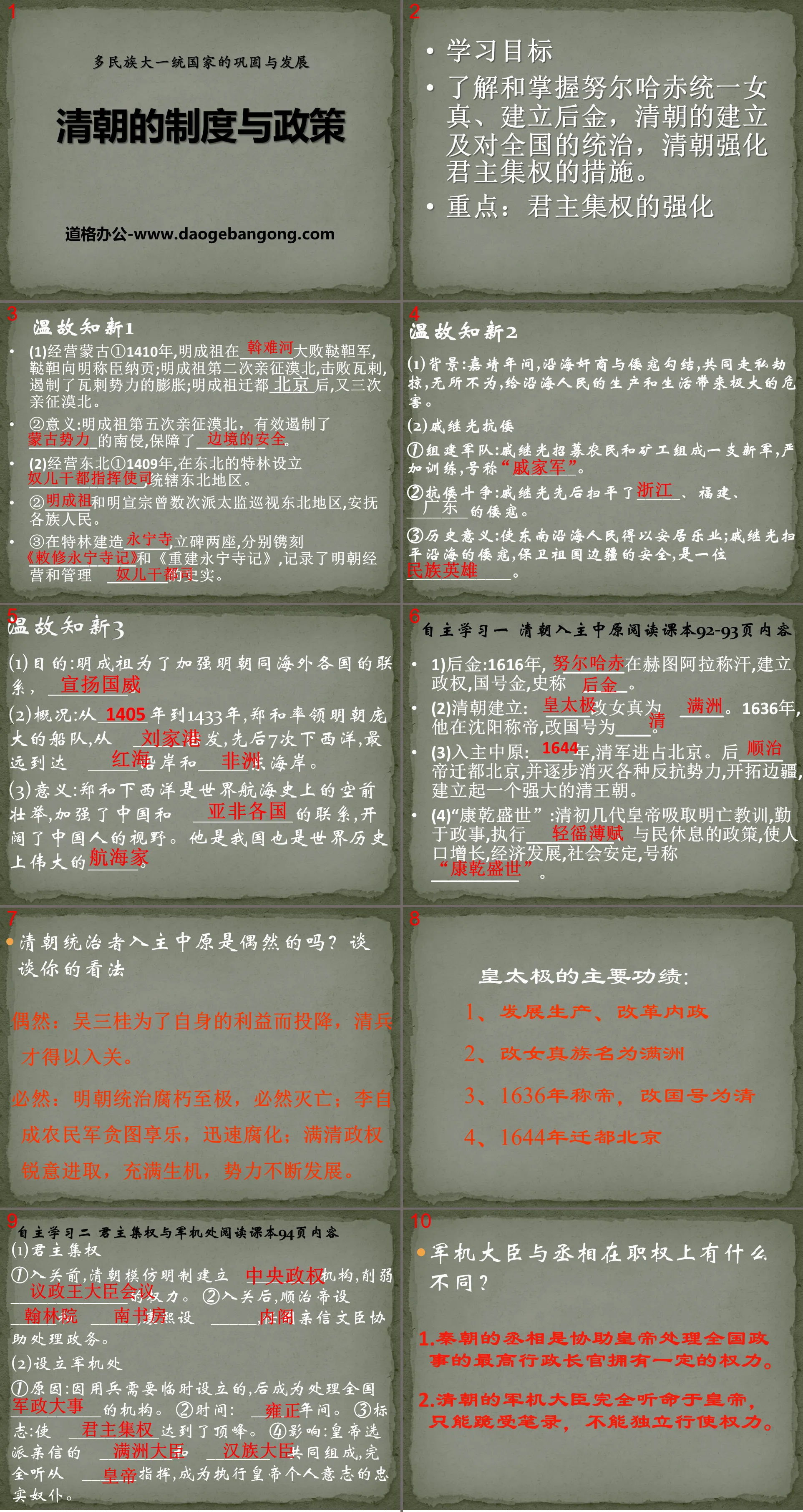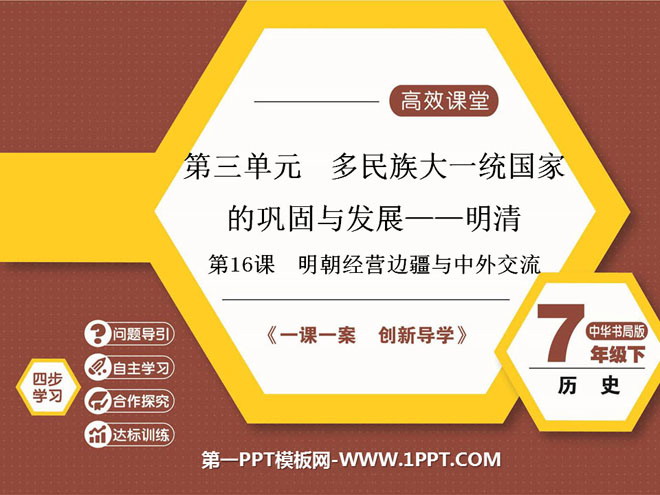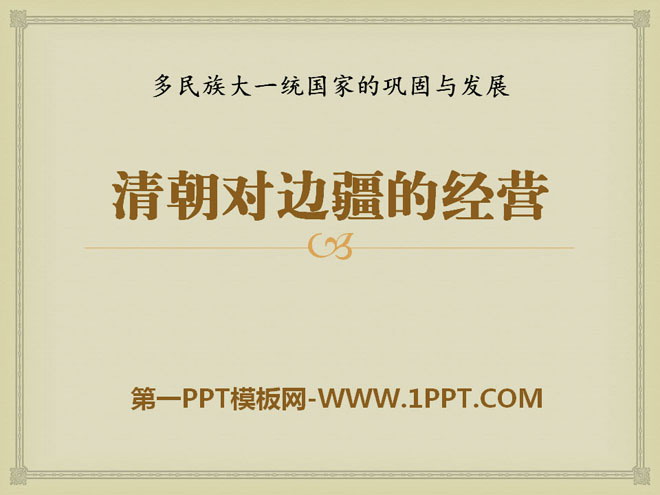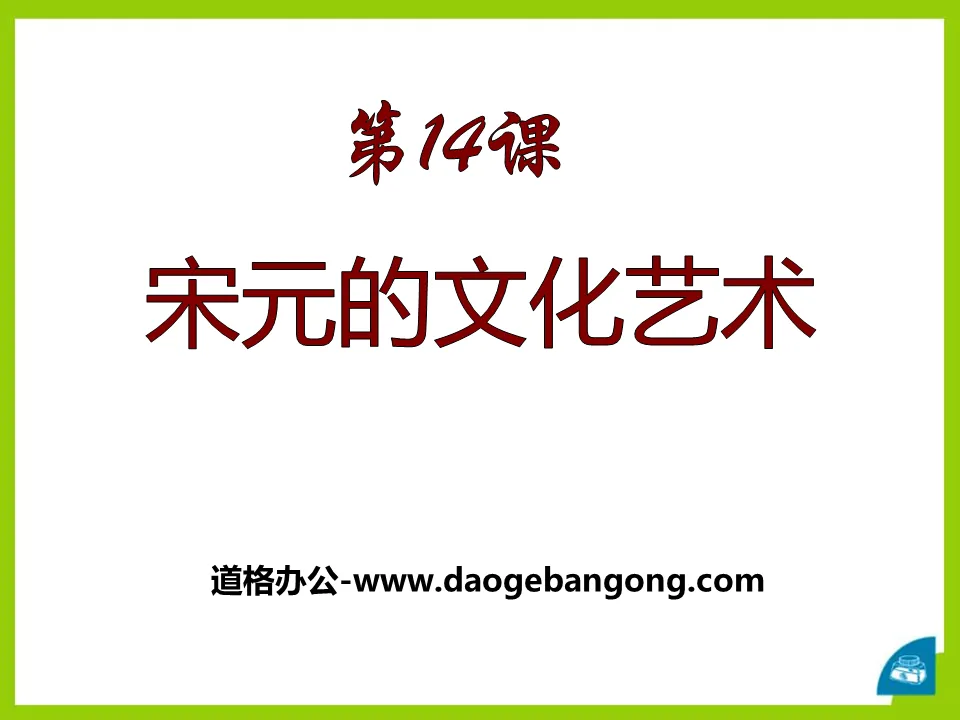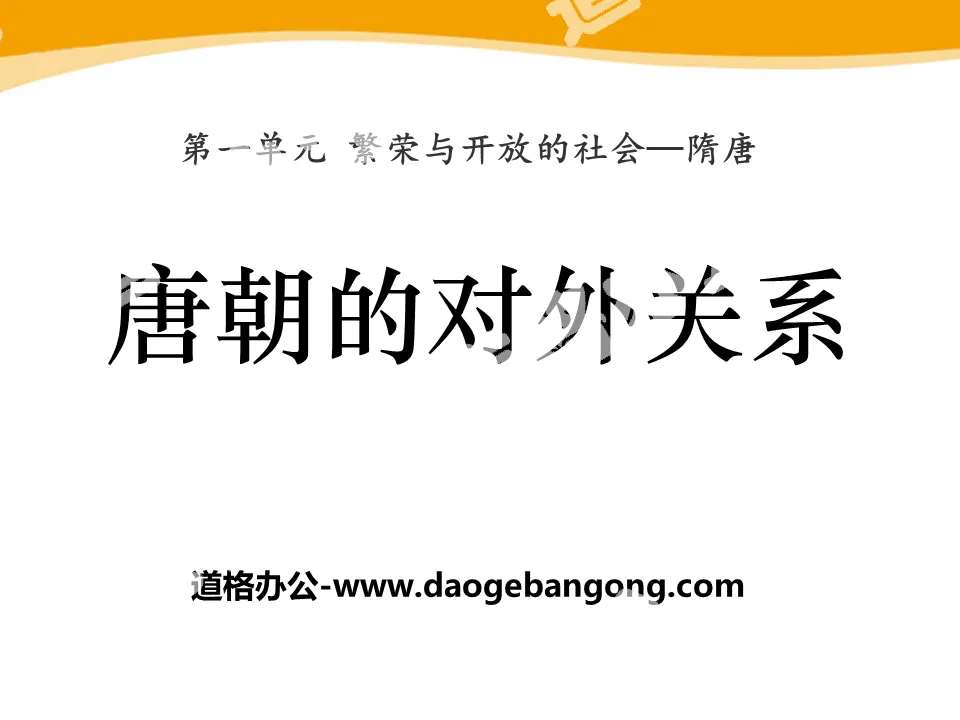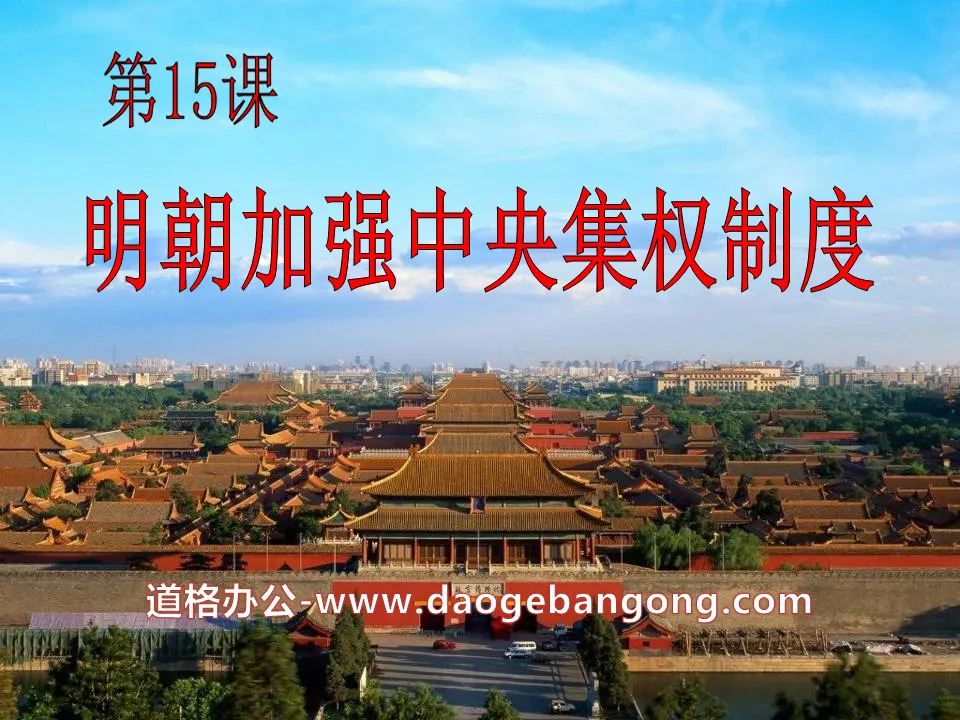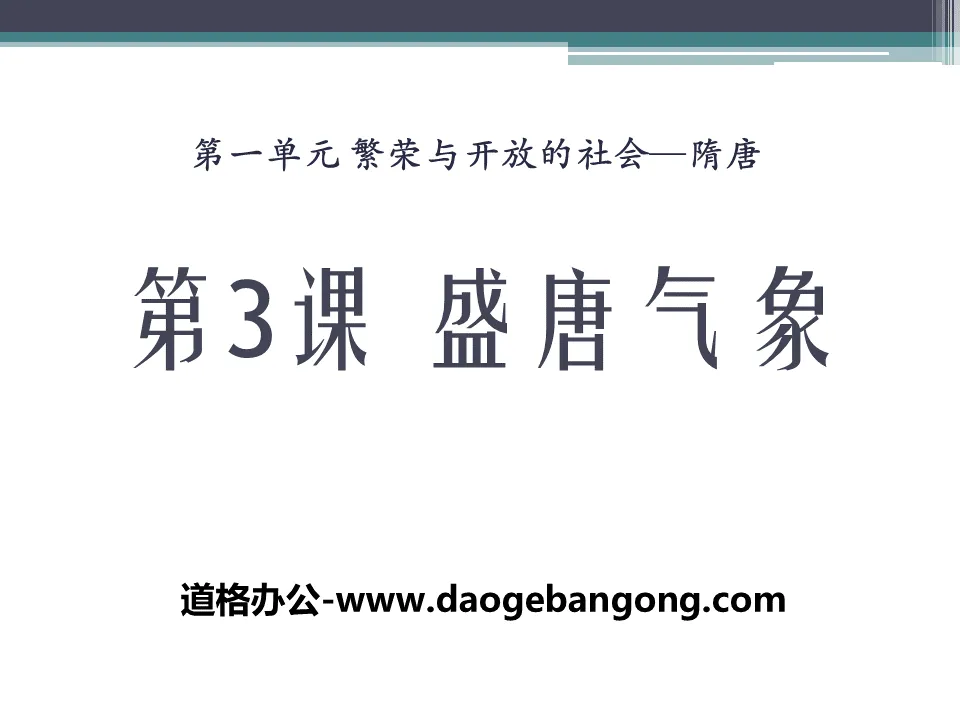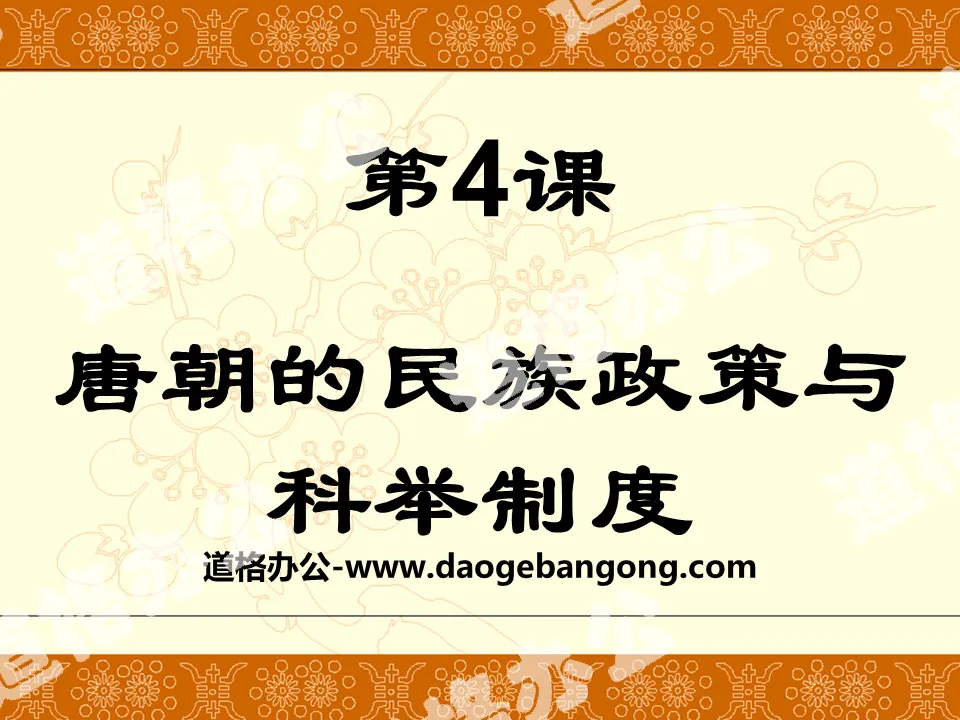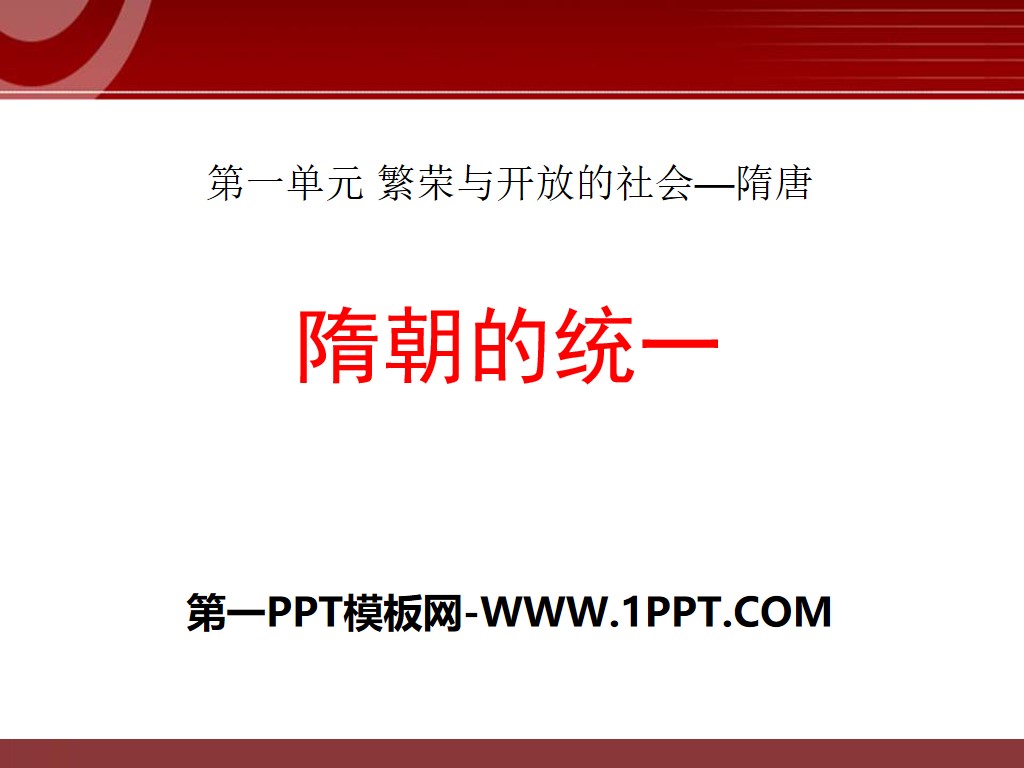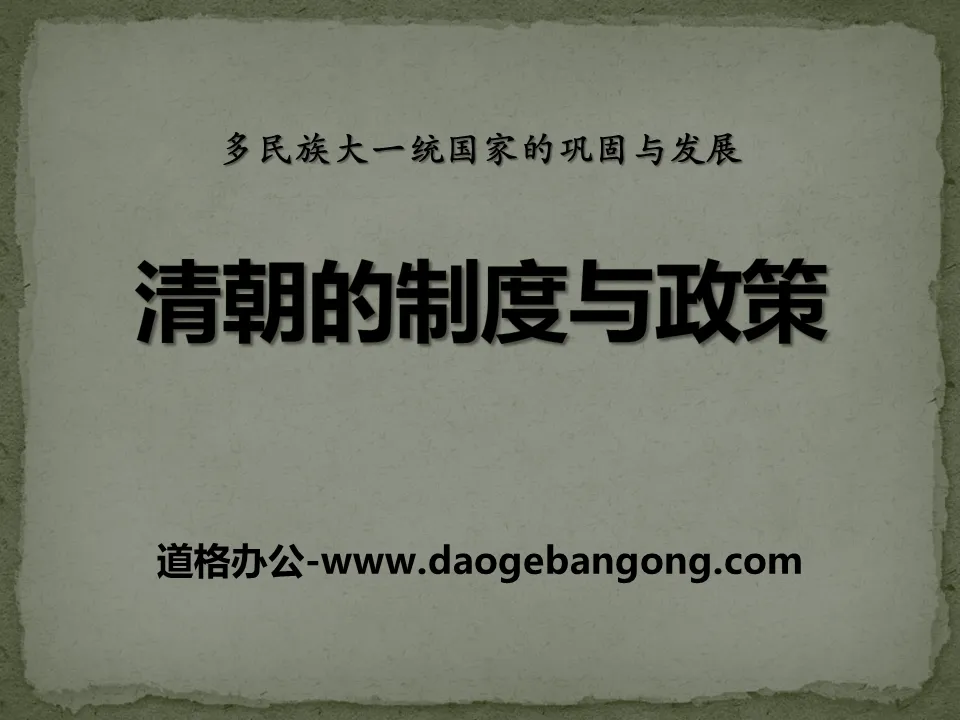
| Category | Format | Size |
|---|---|---|
| Zhonghua Book Company Edition Seventh Grade History Volume 2 | pptx | 6 MB |
Description
"The System and Policies of the Qing Dynasty" PPT courseware on the consolidation and development of a multi-ethnic unified country
learning target
Understand and master Nurhaci's unification of the Jurchens, the establishment of the Later Jin Dynasty, the establishment of the Qing Dynasty and its rule over the country, and the Qing Dynasty's measures to strengthen the centralization of monarchy.
Focus: Strengthening of monarchical centralization
Review the past and learn the new 1
(1) Manage Mongolia ① In 1410, Chengzu of the Ming Dynasty defeated the Tatar army in _______, and the Tatars paid tribute to the Ming Dynasty; Chengzu of the Ming Dynasty personally conquered Mobei for the second time, defeated the Oara, and curbed the expansion of Oara's power; Chengzu of the Ming Dynasty moved the capital After ______, he personally conquered Mobei three times.
② Significance: Ming Dynasty’s fifth personal expedition to Mobei effectively curbed _________’s southern invasion and ensured _________.
(2) Management of the Northeast ① In 1409, _______________ was established in Telin in the Northeast to govern the Northeast region.
②______ and Xuanzong of the Ming Dynasty sent eunuchs to inspect the Northeast region several times to appease the people of all ethnic groups.
③Built ______ in Telin, and erected two monuments, respectively engraved with _______________ and "Reconstruction of Yongning Temple", recording the historical facts of the Ming Dynasty's management and management of ______.
Independent Study 1: The Qing Dynasty took control of the Central Plains. Read the content on pages 92-93 of the textbook.
1) Later Jin Dynasty: In 1616, _______ proclaimed himself khan in Hetuala and established a political power. The country was named Jin and was known as _____ in history.
(2) The establishment of the Qing Dynasty: _____ changed Jurchen to _____. In 1636, he proclaimed himself emperor in Shenyang and changed the country's name to ____.
(3) Entering the Central Plains: In _____ year, the Qing army invaded Beijing. Later, Emperor _____ moved the capital to Beijing, gradually eliminated various resistance forces, opened up frontiers, and established a powerful Qing Dynasty.
(4) "The prosperous age of Kangxi and Qianlong": Several generations of emperors in the early Qing Dynasty learned from the lessons of the Ming Dynasty and the fall of the Ming Dynasty, were diligent in political affairs, and implemented the policy of __________ and resting with the people, resulting in population growth, economic development, and social stability, known as __________.
Was it an accident that the rulers of the Qing Dynasty came to dominate the Central Plains? Talk about your opinions
Occasionally: Wu Sangui surrendered for his own benefit, and the Qing soldiers were able to enter the pass.
Inevitability: The rule of the Ming Dynasty was extremely corrupt and was bound to perish; Li Zicheng's peasant army was greedy for pleasure and quickly corrupted; the Manchu Qing regime was enterprising, full of vitality, and its power continued to grow.
Huang Taiji’s main achievements:
1. Develop production and reform domestic affairs
2. Change the name of the Jurchen tribe to Manchuria
3. Proclaimed himself emperor in 1636 and changed the name of the country to Qing
4. Moved the capital to Beijing in 1644
Independent Study 2: The Centralization of Monarchy and the Military Air Force Reading Textbook Page 94
(1) Centralization of monarchy
① Before entering the customs, the Qing Dynasty imitated the Ming system and established _________ institutions to weaken the power of _____________. ②After entering the customs, Emperor Shunzhi established _____ and _____; Kangxi established _____ and appointed trusted ministers to assist in handling government affairs.
(2) Establish a military aircraft department
①Reason: It was temporarily established due to the need for military deployment, and later became an agency to handle __________ across the country. ②Time: _____ years. ③Mark: __________ has reached its peak. ④Influence: The emperor selects his close confidants, ________ and _______, who completely obey the command of ______ and become loyal slaves who execute the emperor's personal will.
What are the differences in powers between the military minister and the prime minister?
1. The prime minister of the Qin Dynasty was the highest chief executive who assisted the emperor in handling national political affairs and had certain powers.
2. The military ministers of the Qing Dynasty were completely obedient to the emperor's orders and could only kneel to receive transcripts and could not exercise power independently.
Independent Study 3: From sea ban to seclusion, read pages 95-96 of the textbook
(1) Sea ban ① reason: cutting off the connection between the sea ________ and the people on the southeast coast. ② Measures: Strictly prohibit private ships from going out to sea without permission; promulgate _________ and force coastal residents to move dozens of miles inland. ③ Result: The production and life of coastal people have been destroyed, and ________ has been affected.
(2) Retreat: After the pacification of Taiwan, the Qing government designated four ______ ports; during the Qianlong period, the treaty port was reduced to _____, and foreign trade and all external affairs were designated as agents of the Guangzhou Thirteenth Bank; a series of Regulations strictly restrict the activities of foreign businessmen.
How do you understand the Qing Dynasty’s policy of seclusion?
1. The Qing Dynasty’s seclusion policy had a certain self-defense significance.
2. But fundamentally speaking, it cannot truly stop foreign aggressive forces. Instead, it seriously damages China’s own economic development and imprisons the Chinese people’s thinking.
3. This has widened the gap between China and the West, and China has fallen behind in the world.
[Exploration Question 1] What political measures were taken to strengthen monarchy during the Ming and Qing Dynasties? What impact did it have? What problems did it illustrate?
(1) Measures: Abolish the prime minister system and make the six ministries directly under the command of the emperor. The Jinyiwei and Dongchang spy agencies were established to monitor the activities and lives of officials and civilians. During the reign of Emperor Yongzheng, the Military Aircraft Department was established. The establishment of the Military Aircraft Department greatly expanded the imperial power and truly realized the "monopoly of Qian Gang".
(2) Impact: The strengthening of monarchical centralization in the Ming and Qing Dynasties played a role in consolidating the autocratic rule of the Ming and Qing Dynasties, but it also seriously hindered the development and progress of Chinese society, reflecting the decadence of the autocratic monarchy system and its gradual decline.
(3) Explanation: During the Ming and Qing Dynasties, my country’s feudal system had gradually declined.
[Question 2] From openness to isolation is not a short period of time. So, what are the main reasons that lead to isolation in this process?
First of all, the seclusion policy is the product of the backward, closed and self-sufficient feudal natural economy. The feudal rulers were self-satisfied and comatose in this natural manor. They were ignorant of the general trend of the world and blindly rejected everything foreign. Secondly, the seclusion policy was a manifestation of the national narrow-mindedness of the rulers of the Qing Dynasty. Due to the sharp contradictions and struggles between the Manchu nobles and the people, the Manchu rulers tried to isolate the Han people in the country from the outside world through "seclusion" to prevent foreigners from supporting the Han people and forming anti-Qing forces. At the same time, after the mid-Ming Dynasty, Japanese pirates invaded my country's southeastern coast and Western colonists expanded their colonies to the east. These were also the objective reasons for the Ming and Qing rulers to implement the seclusion policy.
Class summary
1. The Qing Dynasty took control of the Central Plains:
In the 17th century, Nurhachi established the Jin Kingdom, known as the Later Jin Dynasty in history.
In 1636, Huang Taiji changed the name of his country to Qing and his family name to Manchuria.
In 1644, Li Zicheng overthrew the Ming Dynasty, and later the Qing army entered Beijing.
2. Centralization of monarchy and military affairs:
Shunzhi: A cabinet was established and the Hanlin Academy was established.
Kangxi: Set up the south study room.
Yongzheng: Set up a military aircraft department.
Qianlong: Cancel the meeting of kings and ministers to discuss government affairs.
3. From sea ban to seclusion:
Maritime ban: designate four ports for foreign trade.
Retreat: During the Qianlong period, it was reduced to one location in Guangzhou, and foreign trade was represented by the Guangzhou Thirteen Banks designated by the government.
Keywords: teaching courseware on the consolidation and development of a unified multi-ethnic country, teaching courseware on the systems and policies of the Qing Dynasty, downloadable history PPT courseware for the second volume of the seventh grade edition of Zhonghua Book Company Edition, download of history slide courseware for seventh grade, the consolidation of a unified multi-ethnic country and development PPT courseware download, Qing Dynasty system and policy PPT courseware download, .PPT format;
For more information about the PPT courseware "Consolidation and Development of a Multi-Ethnic Unified State: The Qing Dynasty's Institutions and Policies", please click on the "Consolidation and Development of a Multi-Ethnic Unified State: The Qing Dynasty's Institutions and Policies" ppt tag.
"The System and Policies of the Qing Dynasty" Consolidation and Development of a Multi-ethnic Unified Country PPT Courseware 3:
"The System and Policies of the Qing Dynasty" Consolidation and Development of a Multi-Ethnic Unified Country PPT Courseware 3 Learning Objectives: 1. To enable students to understand the systems and policies of the Qing Dynasty, the rise of the Jin Dynasty after the establishment of Nurhaci, the rise of Manchuria, the entry of the Qing army and the unification of the country, The monarch centralized power and established military aircraft offices,...
"The System and Policies of the Qing Dynasty" Consolidation and Development of a Multi-ethnic Unified Country PPT Courseware 2:
"The System and Policies of the Qing Dynasty" The Consolidation and Development of a Multi-Ethnic Unified State PPT Courseware 2 1. The Establishment and Consolidation of the Qing Dynasty 1. In 1616, Nurhachi unified the Jurchens and established the Jin 2. In 1636, Huang Taiji changed the Jurchens to Manchuria, After the Jin Dynasty was changed to the Qing Dynasty, the capital was established in Shenyang 3..
File Info
Update Time: 2024-07-03
This template belongs to History courseware Zhonghua Book Company Edition Seventh Grade History Volume 2 industry PPT template
"The System and Policies of the Qing Dynasty" PPT courseware on the consolidation and development of a multi-ethnic unified country Simple campus recruitment activity planning plan summary enterprise and institution recruitment publicity lecture PPT template is a general PPT template for business post competition provided by the manuscript PPT, simple campus recruitment activity planning plan summary enterprise and institution recruitment promotion Lecture PPT template, you can edit and modify the text and pictures in the source file by downloading the source file. If you want more exquisite business PPT templates, you can come to grid resource. Doug resource PPT, massive PPT template slide material download, we only make high-quality PPT templates!
Tips: If you open the template and feel that it is not suitable for all your needs, you can search for related content "The System and Policies of the Qing Dynasty" PPT courseware on the consolidation and development of a multi-ethnic unified country is enough.
How to use the Windows system template
Directly decompress the file and use it with office or wps
How to use the Mac system template
Directly decompress the file and use it Office or wps can be used
Related reading
For more detailed PPT-related tutorials and font tutorials, you can view: Click to see
How to create a high-quality technological sense PPT? 4 ways to share the bottom of the box
Notice
Do not download in WeChat, Zhihu, QQ, built-in browsers, please use mobile browsers to download! If you are a mobile phone user, please download it on your computer!
1. The manuscript PPT is only for study and reference, please delete it 24 hours after downloading.
2. If the resource involves your legitimate rights and interests, delete it immediately.
3. Contact information: service@daogebangong.com
"The System and Policies of the Qing Dynasty" PPT courseware on the consolidation and development of a multi-ethnic unified country, due to usage restrictions, it is only for personal study and reference use. For commercial use, please go to the relevant official website for authorization.
(Personal non-commercial use refers to the use of this font to complete the display of personal works, including but not limited to the design of personal papers, resumes, etc.)
Preview
